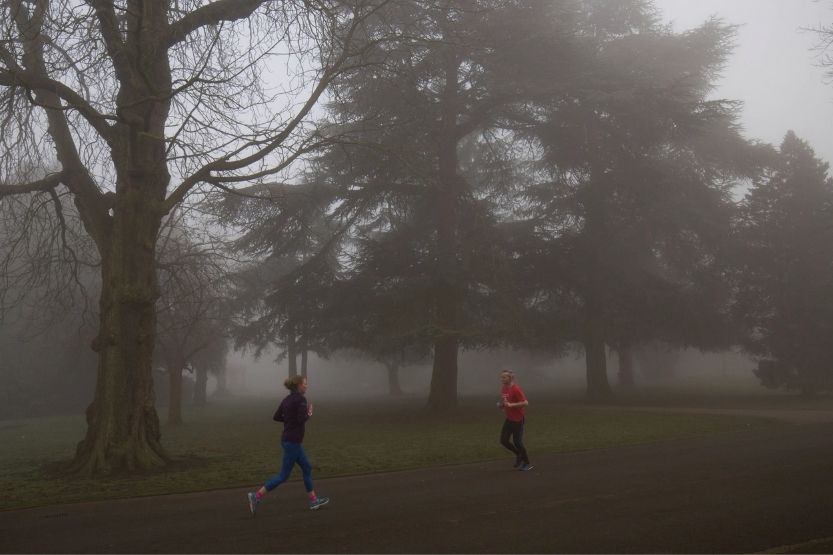

Not that we knew the true dimension of that outdoor air dehumidification load, even when we bothered to calculate it. But it had to deal with massive dehumidification loads. So in the 1990s, we had cooling equipment optimized for sensible cooling. Few designers realized that the dehumidification load also had nearly tripled because of that ventilation air. Then came the ventilation debates of the 1980s, which began by starving buildings of outdoor air and ended by flooding them. So we didn’t get it-especially in the low-cost, high-efficiency constant-volume cooling equipment we like to put on rooftops. Measuring dehumidification efficiency and effectiveness has never been required. But we had been so accustomed to getting humidity control along with our cooling that neither regulators nor designers noticed that in pursuit of sensible cooling efficiency, we gave up latent efficiency. Then we got concerned about energy and started measuring (and regulating) efficiency. With plenty of cheap energy, the industry could afford to wallop the air with heavy-duty cooling to dry it, then fry it with reheat to keep it from freezing the occupants. Not so long ago, HVAC designers did not have to be especially concerned with humidity. A perfect storm of ignorance and good intentions Dew point control has solved some very thorny contemporary problems in a simple, reliable way. A little history is important to understanding why this method, pioneered by Willis Carrier in 1902, has become such a popular modern practice. Why are buildings today so frequently damp, uncomfortable, and smelling a bit, shall we say “earthy”? The reasons are complicated, even if the solution is fairly simple: dew point control.
#Uncomfortable dew point full
La Niña is at or near its peak and is expected to return to neutral levels by early Autumn.View the full story, including all images and figures in our monthly digital edition Image: Forecast air temperature and dew point temperature in Sydney during the next 7 days. While cool southerly winds have provided some relief to Sydneysiders this week, higher air temperatures and dewpoint temperatures are forecast to return next week.

Image: ECMWF forecast 2m dew point temperature at 5pm AEDT on Thursday, January 27. The map below shows high dewpoints across northern and eastern Australia on Friday, January 28. Prevailing easterly winds are helping drag the warm and humid airmass over the east coast of Australia, bringing days of unforgiving humidity. The warm oceans across northern and eastern Australia are injecting moisture into the atmosphere, with increased evaporation. The East Australian Current (EAC) has been dragging this warmth south, with the water temperature off Sydney’s coast a warm 24 degrees on Friday. La Niña has helped drive this humid airmass towards Australia, with warmer than average oceans across the western equatorial Pacific Ocean. So far this January, the average overnight temperature is 20.8✬, while the average maximum temperature was 27.4✬, s, both about 2✬ above normal. Sydney’s humid and sticky weather has unfortunately combined with warm days and nights, adding to the discomfort, and bringing many days of rain and thunderstorms to the state.

20-24✬ – Muggy and quite uncomfortable.>24✬ – Oppressive, uncomfortable for most, possible heat stress issues.The higher the dewpoint, the greater the amount of moisture in the atmosphere, which makes it more difficult to cool down through the evaporation of sweat.įor example, this is how different dew point temperatures would make you feel if you were accustomed to Australia’s sub-tropical climate: The dewpoint is the temperature to which air must be cooled to achieve a relative humidity of 100% or saturation of moisture in the atmosphere. The highest dewpoint in Sydney in January so far was 24.3C☌, which is equivalent to Darwin’s 9am and 3pm average January dewpoint. Images: Average daily relative humidity in January at 9am and 3pm. The mean January relative humidity between 19 at 9am is 71%, while the 3pm mean is 60%. This year’s humidity has been well above the historical average. Sydneysiders have endured a very humid beginning to the year, which is likely influencing energy demand across the city.ĭuring the first 20 days of January, Sydney Observatory Hill’s mean 9am and 3pm relative humidity was 84% and 73% respectively.


 0 kommentar(er)
0 kommentar(er)
